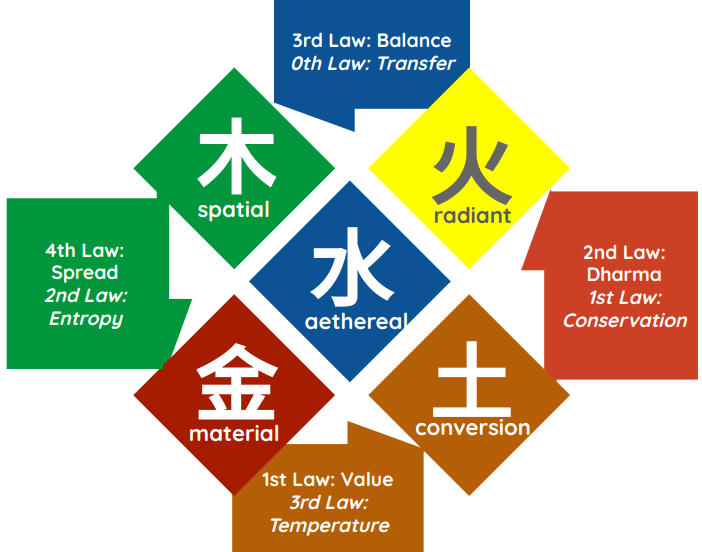The Metaphysics of Value
Principles
| Principles | Assertions |
|---|---|
| Value is subjectivized desire, Prices are objectivized desire | The desires in the physical domain follow the 4 Laws of Thermodynamics |
| . | The desires in the economic domain follow the 4 Laws of Exchangeable Value |
I shall explain [exchangable value] as fully as I can. I earnestly hopefor the reader’s patience to examine something tedious, and his attention to understand what may still be obscure after the fullest explication.
Adam Smith
Book 1, Chapter 3 of The Wealth of Nations Simplified
Supereconomics falls under Social Superphysics .
Superphysics is a paradigm that sees reality as waves that manifest as particles. This is different from science which prefers particles over waves. The scientific paradigm seems to be changing, as proven by electrons nowadays being regarded as a probability ‘cloud’ instead of as a material point.
Value versus Price, Subjective versus Objective
These waves in economics manifest as ‘value’ which represent the abstract feelings of worth (from Latin valere). This worth is the ability of something to produce usefulness & pleasure, or reduce pain & stress.
Particles in economics manifest as ‘prices’ (from Latin pretium whic means ‘reward’ or ‘prize’). These are objective ideas of worth, manifesting as a discrete number.
- ‘Value’ can be imagined as a fluffy cloud with no specific boundaries, or as water in a stream that isn’t contained as a single object
- ‘Price’ can be imagined as a cotton ball that has been compressed as to give it a specific shape, or as a water in a glass that has a specific measure, such as 100mL
Economics is full of specific numbers as GDP, population size, unemployment rate, trade deficit, etc, but only has a few concepts of abstract value.
For example, the economic value of a bridge is more abstract than its cost-price.
- Its economic value has a range such as $1b-$1.5b over 10 years. This is a “fluffy” prediction.
- Its cost price is a specific number such as $100m, paid in 2010. This is exact down to cents, if the accountant is diligent enough.
The ‘Heat’ or Thermodynamics of Desire
Value thus has the same dynamics as inexact fluctuating waves, while price has the dynamics of exact fixed particles. Value is more fundamental* than prices just as waves are more fundamental than particles.
If value were a moving desire-entity, then price would be a snapshot of that desire taken at a certain time.

We can say that value is the cause, and price is just the effect*.
*Socrates calls them shadows
You can hand out prizes such as trophies, but not the value that they represent such as being brightest in class. It is possible to buy an award, yet not be worthy of it.
The engine of value is desire.
- Western philosophies, such as liberalism, utilitarianism, and objectivism, teach the pursuit of desire
- Asian philosophies, such as Buddhism, Hinduism, and Taoism, teach the renunciation and control of desire

This desire is a product of the mind and thus exists in the metaphysical dimension. Its physical counterpart is physical energy as heat, calories, joules, etc.
The rules for physical energy are described as the Four Laws of Thermodynamics. We carry over these laws onto Supereconomics as the Four Laws of Value which operate on human desire*.
Thus:
- the metaphysical dimension has desire, with its dynamics explained by the four laws of value
- the physical dimension has energy, with its dynamics explained by the four laws of themodynamics
The Celsius degrees in thermodynamics then manifest as currency prices in Supereconomics. This lets us fit all the principles of Supereconomics elegantly under the four headings of the 4 Laws of Value.

This classification is different from the messy* organization of Economics as micro-macro-economics, behavioral, political economy, development economics, etc.
*Such a mess is what happens when people build something in an uncoordinated way or without looking at the very big picture. In contrast, our Supereconomics is a subset of Social Superphysics which is itself a subset of Superphysics.
Before we explain the four laws of value, we have to explain the different kinds of value.